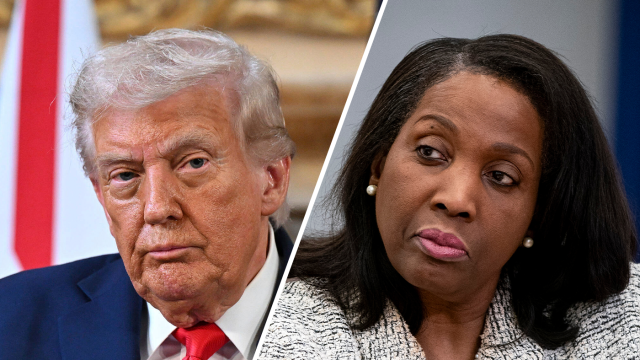(Reuters) – The U.S. Supreme Court said on Wednesday it will hear arguments in January over Donald Trump‘s attempt to remove Federal Reserve Governor Lisa Cook, leaving her in the post for now and teeing up a major legal battle over the first-ever bid by a president to fire a Fed official as he challenges the central bank’s independence.
The justices declined to immediately decide a Justice Department request to put on hold a judge’s order temporarily blocking the Republican president from removing Cook, an appointee of Democratic former President Joe Biden. It deferred a resolution on that request until the justices hear oral arguments.
In creating the Fed in 1913, Congress passed a law called the Federal Reserve Act that included provisions to shield the central bank from political interference, requiring governors to be removed by a president only “for cause,” though the law does not define the term nor establish procedures for removal. The law has never been tested in court.
Washington-based U.S. District Judge Jia Cobb on September 9 ruled that Trump’s claims that Cook committed mortgage fraud before taking office, which Cook denies, likely were not sufficient grounds for removal under the Federal Reserve Act.
Cook, the first Black woman to serve as a Fed governor, sued Trump in August after the president announced he would remove her. Cook has said the claims made by Trump against her did not give the president the legal authority to remove her and were a pretext to fire her for her monetary policy stance.
The U.S. Court of Appeals for the District of Columbia Circuit in a 2-1 ruling on September 15 denied the administration’s request to put Cobb’s order on hold.
The Supreme Court has in a series of decisions in recent months allowed Trump to remove members of various federal agencies that Congress had established as independent from direct presidential control despite similar job protections for those posts. The decisions suggest that the court, which has a 6-3 conservative majority, may be ready to jettison a key 1935 precedent that preserved these protections in a case that involved the U.S. Federal Trade Commission.
But the court has signaled that it could treat the Fed as distinct from other executive branch agencies, noting in May in a case involving Trump’s dismissal of two Democratic members of federal labor boards that the Fed “is a uniquely structured, quasi-private entity” with a singular historical tradition
Trump’s bid to fire Cook reflects the expansive view of presidential power he has asserted since returning to office in January. So long as the president identifies a cause for removal, that is within his “unreviewable discretion,” the Justice Department said in its September 18 filing to the Supreme Court.
“Put simply, the President may reasonably determine that interest rates paid by the American people should not be set by a Governor who appears to have lied about facts material to the interest rates she secured for herself – and refuses to explain the apparent misrepresentations,” the filing stated.
Granting Trump’s request, her lawyers told the Supreme Court on September 25, “would eviscerate the Federal Reserve’s longstanding independence, upend financial markets and create a blueprint for future presidents to direct monetary policy based on their political agendas and election calendars.”
A group of 18 former U.S. Federal Reserve officials, Treasury secretaries and other top economic officials who served under presidents from both parties also urged the Supreme Court not to let Trump fire Cook. The group included the past three Fed chairs, Janet Yellen, Ben Bernanke and Alan Greenspan. In a brief to the court, they wrote that allowing this dismissal would threaten the Fed’s independence and erode public confidence in it.
Cook took part in the Fed’s highly anticipated two-day meeting in Washington in September in which the central bank decided to cut interest rates by a quarter of a percentage point, as policymakers responded to concerns about weakness in the job market. Cook was among those voting in favor of the cut.
RIPPLE EFFECT
Concerns about the Fed’s independence from the White House in setting monetary policy could have a ripple effect throughout the global economy.
The case has ramifications for the Fed’s ability to set interest rates without regard to the wishes of politicians, widely seen as critical to any central bank’s ability to function independently to carry out tasks such as keeping inflation under control.
Trump this year has demanded that the Fed cut rates aggressively, berating Fed Chair Jerome Powell for his stewardship over monetary policy as the central bank focused on fighting inflation. Trump has called Powell a “numbskull,” “incompetent” and a “stubborn moron.”
Since Trump returned to office, the Supreme Court has sided with Trump’s administration in almost every case it has been called upon to review, allowing his policies to proceed after they were impeded by lower courts, while litigation over them continues.
Trump on August 25 said he was removing Cook from the Fed’s Board of Governors, citing allegations that, prior to joining the central bank in 2022, she falsified records to obtain favorable terms on a mortgage. Her term was set to expire in 2038.
In blocking Cook’s removal, the judge found that her purported removal likely violated the Federal Reserve Act, which only allows a Fed governor to be removed for misconduct while in office, as well as Cook’s due process rights under the U.S. Constitution’s Fifth Amendment. The mortgage fraud claims against Cook relate to actions prior to her Senate confirmation in 2022.













